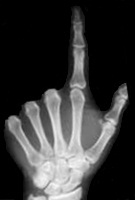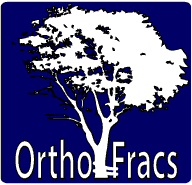Journal Club
July 2010
Clinical, Radiographic, and Ultrasonographic Comparison of Subscapularis Tenotomy and Lesser Tuberosity Osteotomy for Total Shoulder Arthroplasty
- Authors: Jason J. Scalise,, James Ciccone, and Joseph P. Iannotti
- Institution: Cleveland Clinic, Cleveland, Ohio, USA
- Journal: J Bone Joint Surg Am. 2010;92:1627-1634
- Study Type
- Retrospective case control seriesaLevel III evidence
- Study not directly funded
- DePuy sponsored research fund/department
- Retrospective case control seriesaLevel III evidence
Reviewed by
Dr David Shepherd
MBBS | Accredited Orthopaedic Registrar
Introduction
- Subscapularis deficiency after shoulder arthroplasty has a negative effect on long-term outcomes.
- Thus, increasing emphasis has been placed on the technique for repair of the tendon.
- Aim
- To assess the difference in functional outcome between subscapularis tenotomy vs lesser tuberosity osteotomy in total shoulder atrhroplasty
- To assess the difference in functional outcome between subscapularis tenotomy vs lesser tuberosity osteotomy in total shoulder atrhroplasty
- Hypotheses
- Mobilizing subscapularis through a lesser tuberosity osteotomy results in better clinical outcome and less subscapularis dysfunction
Methodology
- Outcome Paramaters
- Clinical
- Blinded ROM, Belly press test, 1 year
- Penn shoulder score (pain, satisfaction, function) 1year, 2 years
- Strength
- IR strength at 1 year
- Handheld dynamometer, 3 recorded tests
- IR strength at 1 year
- Blinded ROM, Belly press test, 1 year
- Radiographic
- Preop, 1year.
- Union of tuberosity and adjacent cortices, position
- Prosthetic loosening
- Preop, 1year.
- Ultrasound
- 1 year, single operator + surgeon, blinded to technique and outcome.
- Intact/ attenuated > 50% / full thickness tear
- 1 year, single operator + surgeon, blinded to technique and outcome.
- Clinical
- Inclusion Criteria
- Patients with osteoarthritis who underwent primary total shoulder arthroplasty with either a subscapularis tenotomy or lesser tuberosity osteotomy
- Radiographic OA criteria
- Glenohumeral jointspace narrowing
- subchondral sclerosis
- osteophytes
- Glenohumeral jointspace narrowing
- Patients with osteoarthritis who underwent primary total shoulder arthroplasty with either a subscapularis tenotomy or lesser tuberosity osteotomy
- Exclusion criteria
- Inflammatory arthritis, traumatic arthritis, osteonecrosis
- Concomitant rotator cuff tear
- Prior shoulder surgery
- Hemiarthroplasty
- Hemiarthroplasty
- Immediate postoperative infection
- Deviation from the standard postoperative rehabilitation protocol.
- Inflammatory arthritis, traumatic arthritis, osteonecrosis
- Patients
- 48 patients
- Consecutive series over 2 year period, same surgeon
- Power analysis of 12 patients
- 14 lost to follow up
- 3 lost, 3 post-op complications, 8 too far away
- 3 lost, 3 post-op complications, 8 too far away
- Consecutive series over 2 year period, same surgeon
- 34 divided -stratified by sex
- Group 1 Subscapularis tenotomy
- 15 patients
- 39 months follow up
- 39 months follow up
- 15 patients
- Group 2 Lesser tuberosity osteotomy
- 19 patients
- 30 months follow up
- 30 months follow up
- 19 patients
- Group 1 Subscapularis tenotomy
- 48 patients
- Surgical Technique
- Deltopectoral approach
– biceps tenodesed
- Subscap defined, interval between capsule developed
- Tenotomy
- Dissected off Lesser tuberosity, LT debrided of fibrocartilage
- 2 mm drill hole lateral to LT, bony bridge fibrewire repair
- Dissected off Lesser tuberosity, LT debrided of fibrocartilage
- Osteotomy
- Medial to bicipital groove, parallel to tendon
- Continued to articular surface medially, anatomic neck inferiorly
- Fragment 5 – 10mm thick, 3-4 cm long
- 2mm drill holes, tension band construct around stem
- Medial to bicipital groove, parallel to tendon
- Global Advantage, cementless the humeral side.
- Deltopectoral approach
- Postop
- Sling twenty-four hours, passive range-of-motion day 1.
- pendulum exercises, full passive elevation passive external rotation.
- 6 weeks, passive ER limited to 10 deg less than surgery , all patients at least 30.
- At 6 weeks, progressive strengthening, unrestricted range of motion.
- At 12 weeks, ongoing home based program.
- Sling twenty-four hours, passive range-of-motion day 1.
- Statistics:
- Student t test
- outcome scores, strength, range of motion, and ultrasound results
- outcome scores, strength, range of motion, and ultrasound results
- Spearman rank correlation coefficient
- relationships between ultrasound results and the belly-press test.
- Student t test
Results
- Shoulder score (Penn)
- Post operative: Osteotomy 92 vs Tenotomy 81 (p = 0.04) ( PRE-OP 29)
- 1 year: Osteotomy 92 vs Tenotomy 73 (p = 0.01)
- 2 years : Osteotomy 86 vs tenotomy 74 (non-signficant)
- Post operative: Osteotomy 92 vs Tenotomy 81 (p = 0.04) ( PRE-OP 29)
- Subscapularis
- Intact: Osteotomy 90% vs Tenotomy 53% (p = 0.01)
- Osteotomy 2 attenuated
- All osteotomies united, no stem loosening
- All osteotomies united, no stem loosening
- Tenotomy 6 attenuated, 1 full tear
- Intact: Osteotomy 90% vs Tenotomy 53% (p = 0.01)
- External rotation
- Significant improvement in ER both groups (15 to 50)
- No difference between groups in ER or belly press test.
- IR Strength
- Belly test + 3 tenotomy, 1 osteotomy
- No difference between groups between strength when controlled for sex.
- Overall Osteotomy 119 N vs tenotomy 95 N ( p=0.01)
- Belly test + 3 tenotomy, 1 osteotomy
Discussion
- Both techniques clearly resulted in improved clinical outcomes at a minimum two-year follow-up interval
- The osteotomy technique resulted in
- higher total Penn Shoulder Score
- lower prevalence of subscapularis abnormalities on ultrasonography
- anatomic healing of the osteotomy in all patients.
- Fatty infiltration of subscapularis
- May account for similar IR strength
- Longer time period may account for adaptation
- Longer time period in tenotomy group, allowing tears to account for lower scores
Pros of Study
- First comparison study
- 2 year follow up
- Consecutive case series
- Blinded clinical follow up
Cons of Study
- Retrospective
- Difference in follow up times between groups of 9 months
- No ultrasound at 2 year follow up to correlate clinical outcome with.
- Possibility of type II error
Take home message
- Good clinical outcome from total shoulder arthroplasty in patients with advanced glenohumeral OA regardless of osteotomy or tenotomy of subscapularis
- Osteotomy may provide a more predictable functional outcome
Webpage Last Modified:
5 September, 2010



